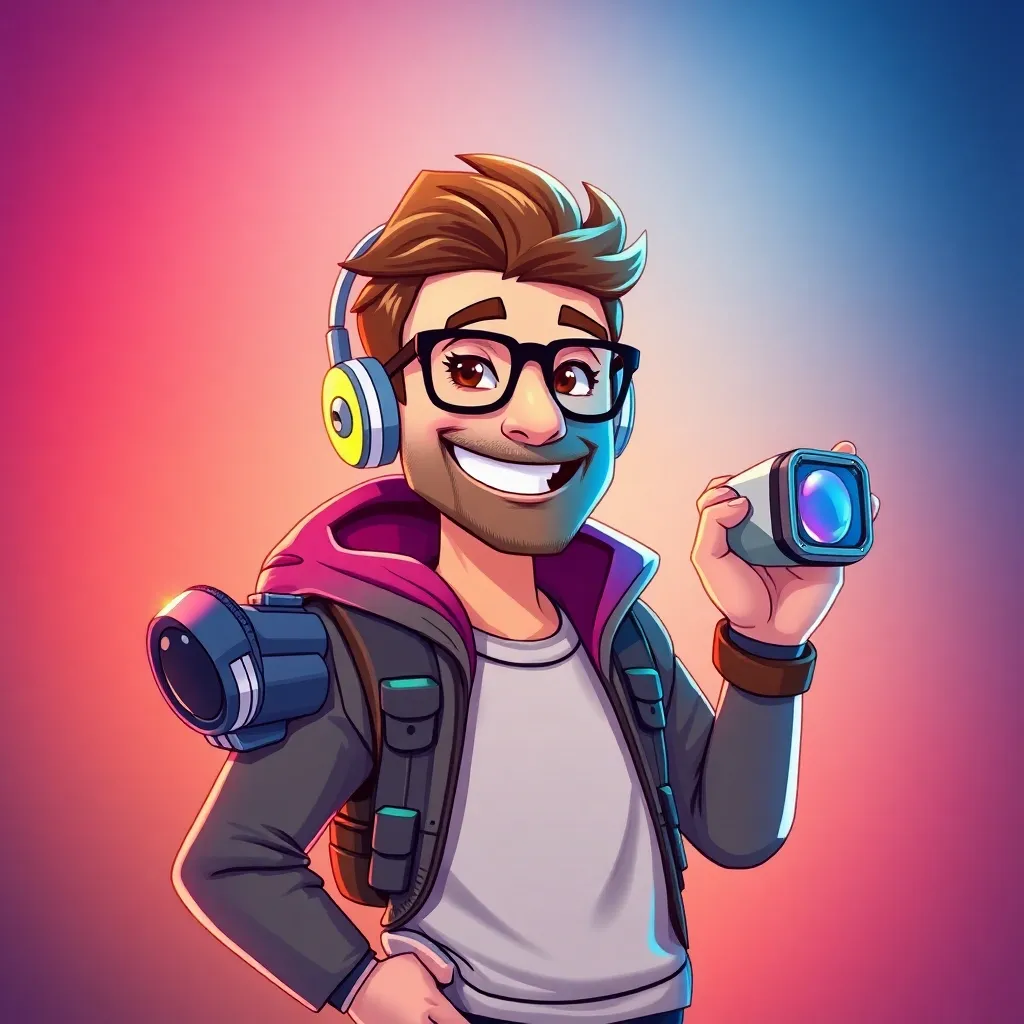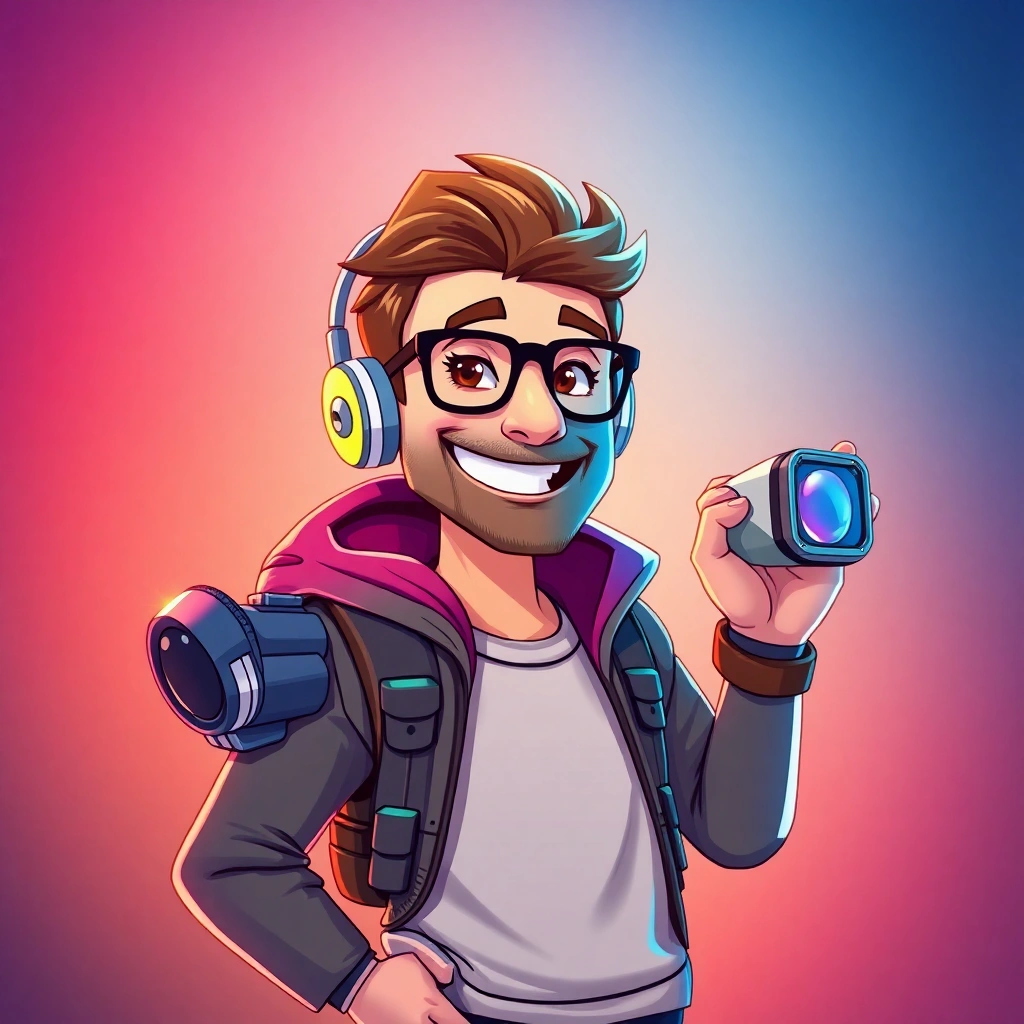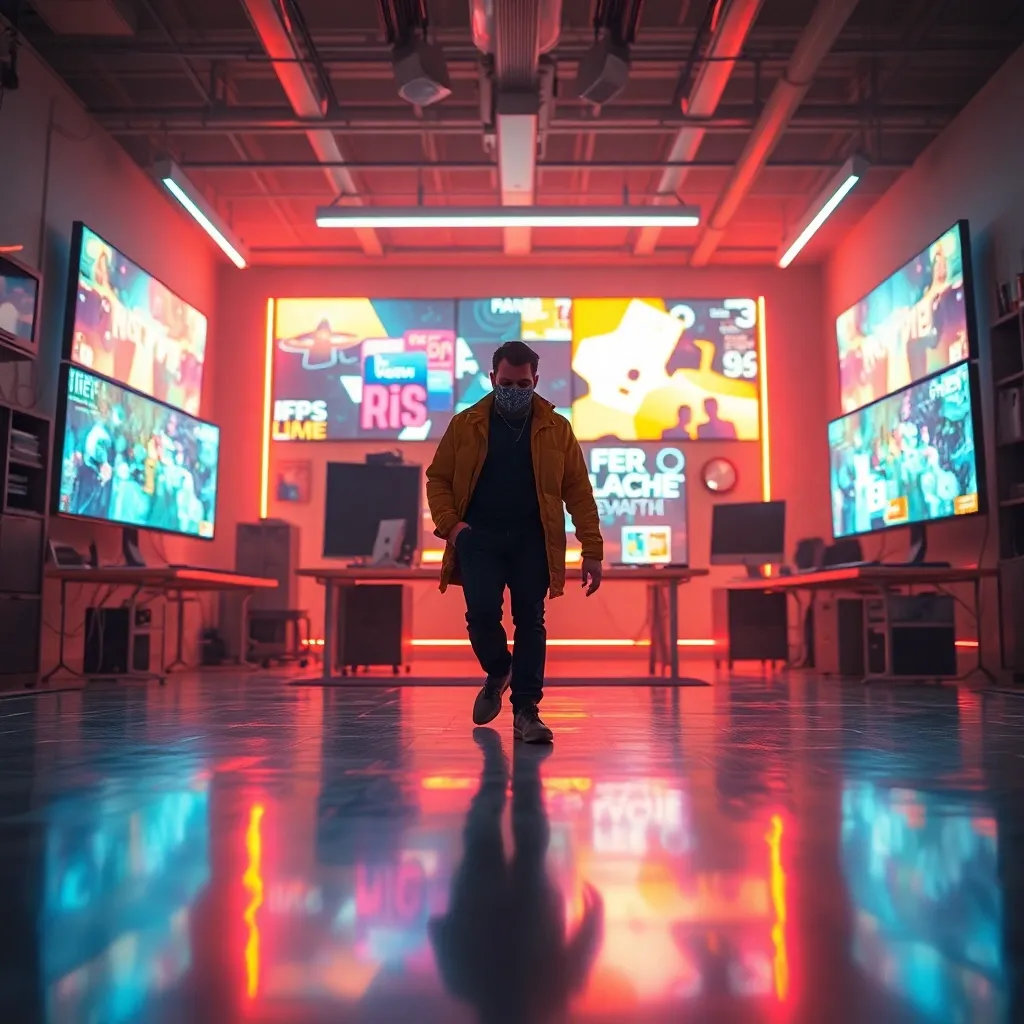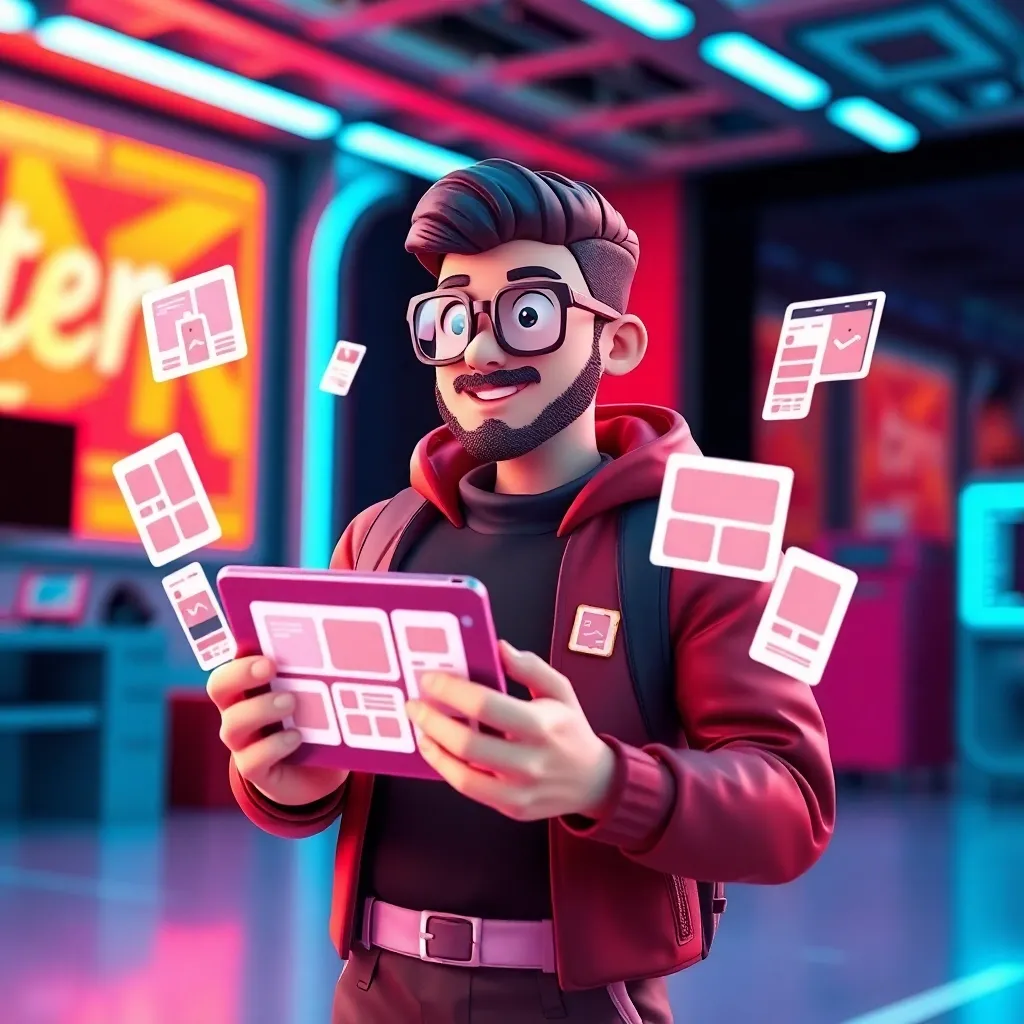“Boost Your Ad Creatives with AI UGC: A Marketer’s Guide”
- Boost Your Ad Creatives with AI UGC: A Marketer’s Guide
- What Is AI UGC and Why It Wins
- The AI UGC Stack: Tools You’ll Actually Use
- Strategy First: The Creative Science Behind AI UGC
- Workflow: From Brief to Live Ads in 24 Hours
- Platform Playbooks for AI UGC in Social Media Marketing
- SEO Meets Creative: Turn Search Intent into Scroll-Stopping Ads
- Measurement: Proving ROI with a Clear Test Design
- Governance, Risk, and Brand Safety for AI UGC
- How Mad Bot Art Unifies the Stack
- Playbooks and Templates You Can Use Today
- Case Study Example: From Idea to ROI in 10 Days
- Implementation Roadmap: 30/60/90 Days
- Frequently Asked Questions
- Advanced Tactics: From Good to Great
- Why Now: The Economics of Creative Volume
- Put It All Together with Mad Bot Art
- Conclusion: Make AI Your Creative Advantage

Boost Your Ad Creatives with AI UGC: A Marketer’s Guide
Today’s top-performing ad units don’t look like ads—they look like friends sharing tips in your feed. That’s the power of UGC-style creative, and artificial intelligence now makes it possible to scale those formats without scaling your overhead. This guide shows you how to use AI UGC to accelerate creative testing, win cheaper reach, and maximize ROI—while staying on-brand, compliant, and fast.
You’ll learn how to build a full AI creative production pipeline across copy, design, and video; orchestrate testing with an ai campaign builder; and connect your creative to performance insights and ai seo optimization. We’ll also map the playbooks to a unified studio that brings scripting, visuals, ai video ads, and SEO under one roof so teams can ship more, learn faster, and grow smarter.
What Is AI UGC and Why It Wins
AI UGC is ad creative that mimics the look-and-feel of user-generated content—self-shot vertical videos, voiceovers, screenshots, unboxings, testimonials—but produced with AI. Instead of chasing creators and reshoots, an ai content creator can generate high-volume variations from a defined brand kit, while an ai design tool polishes frames and graphics. The result: a steady flow of on-brand, organic-feeling content that performs in social media marketing feeds.
Why it works:
- Pattern match: Feels native to the platform, not interruptive.
- Signal velocity: High-volume iterations help algorithms find winners fast.
- Cost control: You test ten ideas for less than the cost of one live shoot.
- Message-market fit: Rapid feedback loops sharpen positioning and offers.
The pillars:
- Script: Hook, problem, proof, CTA.
- Visuals: Phone-first framing, motion, captions.
- Sound: Conversational VO, captioning accessibility, music cues.
- Social proof: Claims backed by reviews, receipts, and demos.
The AI UGC Stack: Tools You’ll Actually Use
Modern teams don’t just need a single ai ad maker. They need an integrated stack that shrinks the distance from strategy to delivery. Here’s how the pieces fit together:
- AI content creator: Turns briefs into hooks, scripts, captions, and on-brand copy variations.
- AI design tool: Generates thumbnails, tiles, overlays, and product renders with style-consistent templates.
- AI video ads generator: Builds vertical videos from scenes, b-roll, voice avatars, and on-screen text.
- AI social media content tool: Packages creatives into feed-ready formats with auto-resizing, subtitles, and platform metadata.
- Marketing ai tools: Keyword insights, trend mining, competitor analysis, and ai seo optimization to align creative and search intent.
- AI campaign builder: Orchestrates briefs, timelines, approvals, asset routing, and analytics in one place.
- AI growth engine: Connects creative production with SEO and revenue analytics, turning experiments into compounding results that feed marketing analytics.
When these pieces live inside one workspace, you avoid the “tool soup” that slows teams down. You ideate, generate, approve, and ship—then loop learnings back into your next set of assets.
Strategy First: The Creative Science Behind AI UGC
Before you spin up your ai ad maker, establish a creative system. AI accelerates what you feed it, so quality in equals quality out.
- Define the conversion moment
- What exact action matters? Purchase, free trial, lead form, app install?
- Translate that into a crisp CTA and a single KPI for your first test: CPA, CPL, CAC, or ROAS.
- Craft your message map
- Jobs-to-be-done: What “job” does your product solve?
- Proof stack: Reviews, before/after, data points, press quotes.
- Offers: Free shipping, bundles, trials, time-limited promos.
- Choose your UGC frames
- Testimonial (face-to-camera)
- Duet/reaction (split-screen)
- Unboxing/walkthrough (hands + product)
- Challenge/comparison (before/after)
- POV day-in-the-life (context of use)
- Build a 3x3x3 test matrix
- 3 hooks x 3 proof points x 3 CTAs = 27 variants
- Use your ai content creator to draft scripts and your ai design tool to create matching overlays and lower thirds.
- Auto-produce with ai video ads to keep output consistent and fast.
- Set governance early
- What can AI change? What’s locked by brand? Where is disclosure required?
- Establish approvals, brand kits, and guardrails inside your ai campaign builder so new teammates don’t reinvent the wheel.
Workflow: From Brief to Live Ads in 24 Hours
Use this step-by-step production flow to ship AI UGC fast without sacrificing polish.
- Brief and research
- Feed audience personas, pain points, top FAQs, and competitor angles into your ai social media content tool.
- Layer in ai seo optimization with seed keywords and questions to match platform and search intent.
- Scripting and storyboarding
- Use your ai content creator to draft 10 hooks in the first person. Pick 3 to storyboard.
- Storyboard scenes: 5–7 beats max for 15–30 seconds. Identify overlays, captions, and cutaways.
- Voice and visuals
- Generate VO with brand-approved avatars for clarity and tone. Keep pace at 140–160 WPM.
- With an ai design tool, produce frames for intros, claims, and CTAs. Maintain the same typography and color system across variations.
- For ai video ads, select b-roll or prompt image sequences that match each beat. Use natural camera moves.
- Edit and caption
- Add big, readable captions with key phrases highlighted.
- Keep early cuts punchy: On screen, show product or payoff in the first 2 seconds.
- Export platform-native aspect ratios (9:16, 1:1 as needed).
- Package for platforms
- Your ai social media content tool should generate platform-specific metadata: hashtags, description, and first comment.
- Use the ai campaign builder to bundle variants per audience and split test by hook first, then CTA.
- QA and approvals
- Run governance checks: brand claims, pricing, disclosures.
- Approve in-app with annotations so changes are tracked. Version control prevents regressions.
- Launch and learn
- Go live with the highest-confidence set.
- Monitor creative KPIs: Hook rate, 3-second view rate, CTR, CPC, add-to-cart rate, and conversion rate.
- Build a weekly “learn > iterate > relaunch” loop inside your ai growth engine.
Platform Playbooks for AI UGC in Social Media Marketing
Different channels reward different creative cues. Tailor your ai video ads and copy accordingly.
TikTok and Reels
- Format: 9:16 vertical, 15–30 seconds; fast cuts; rhythmic text.
- Hooks: “I tried [product] so you don’t have to,” “3 things I wish I knew,” “POV:”
- Tactics: Native text stickers, quick zooms, sound alignment.
- Tools: Lean on an ai ad maker to rapidly generate 5–7 hook variants per concept.
YouTube Shorts
- Format: 9:16 vertical; 30–45 seconds.
- Hooks: Curiosity gaps; “watch me turn X into Y.”
- Tactics: Clear mid-roll proof, end-card with strong CTA.
- Tools: Use an ai design tool for custom end-cards and a/b test CTAs.
Meta (Feed + Stories)
- Format: 1:1 for feed, 9:16 for stories; 15–30 seconds.
- Hooks: Benefit-first VO; bold headline overlay.
- Tactics: Product close-ups, testimonials, swipe-up arrows.
- Tools: Use your ai social media content tool to auto-generate versions with different overlays.
- Format: 1:1 or 4:5; 20–45 seconds; subtitles mandatory.
- Hooks: Problem framing, data-backed insights.
- Tactics: Subtle branding, case-study cuts, authoritative tone.
- Tools: Marketing ai tools to mine industry stats, then ai video ads to narrate a mini-case.
Snapchat and Shorts Ads
- Format: 9:16; 6–15 seconds.
- Hooks: One-liners; meme frames; playful edits.
- Tactics: Big type, sound effects, quick payoff.
- Tools: Use an ai content creator to generate meme-style captions safely within brand.
SEO Meets Creative: Turn Search Intent into Scroll-Stopping Ads
Creative should reflect what people actually search and say. That’s where ai seo optimization informs scripts and visuals.
How to integrate:
- Intent mapping: Pull keywords and questions. Turn top questions into UGC hooks.
- SERP to social: Convert long-form keyword clusters into bite-sized carousels and ai video ads.
- Authority echo: Use data-backed claims discovered via marketing ai tools and cite them in VO or overlays.
- Cross-channel compounding: Publish blog posts and Shorts on the same theme. Retarget viewers with creative that echoes the blog’s proof.
Workflow:
- Research with ai seo optimization to identify “pain-point + solution” keywords.
- Draft an outline for a blog or landing page; feed the core messages to your ai content creator.
- Create 3 vertical scripts mirroring the article’s main points; generate visuals via your ai design tool.
- Publish the long-form article and launch matching ai video ads to accelerate discovery and retargeting.
Measurement: Proving ROI with a Clear Test Design
AI helps you launch more variants; your job is to learn systematically. Use this framework to turn volume into signal.
-
Phase 1: Hook testing
- Objective: Maximize thumb-stop rate and 3-second views.
- Method: Keep the middle and end constant; swap only the opening 2–3 seconds.
- Metrics: Hook rate (impressions to 3s), average watch time, CTR.
-
Phase 2: Proof testing
- Objective: Identify the most persuasive claim or demo.
- Method: Keep hook and CTA constant; swap the body proof.
- Metrics: CTR, CPC, add-to-cart rate, soft conversions.
-
Phase 3: Offer and CTA
- Objective: Drive the best combo of cost and conversion rate.
- Method: Keep first 80% constant; swap the last 5–7 seconds.
- Metrics: CPA/CPL, CVR, ROAS.
-
Saturation and fatigue
- Monitor frequency, decay in CTR, and rising CPC over time.
- Pre-plan 2–3 new hooks per week to outrun fatigue.
-
Budgeting the learning agenda
- Assign a “learning tax” (10–20%) to new creative each week.
- Use an ai campaign builder to tag spend by test cell so you can attribute ROI per concept, not just per ad set.
-
Attribution and incrementality
- Cross-check platform-reported results with analytics and post-purchase surveys.
- If budget allows, run holdout or geo splits to prove lift. Your ai growth engine should log results and push the winners into evergreen rotations.
Governance, Risk, and Brand Safety for AI UGC
Scale without chaos by baking governance into the stack.
- Brand kits and voice: Lock color, type, logo usage, tone, and claim language.
- Approvals: Reviewer queues with version history; no silent edits.
- Disclosures: Follow platform and local guidelines for synthetic media and endorsements.
- Data privacy: Don’t feed sensitive customer data into general models; use role-based controls.
- Bias and representation: Ensure your ai content creator and ai design tool produce diverse, inclusive casting and scenarios.
- Legal substantiation: Keep a proof repository for claims shown in overlays and ai video ads.
How Mad Bot Art Unifies the Stack
Most teams juggle a patchwork of point solutions. Mad Bot Art is a unified AI production studio that lets teams script, design, animate, narrate, and ship brand-ready media from one browser-based workspace. It bridges strategy to delivery so you can start with briefs and evolve into multimodal outputs—text, image, video, voice, and SEO content—without bouncing between tools.
What stands out:
- Multimodal depth: Text, images, ai video ads, audio, avatars, style transfer, and ai seo optimization live in one stack.
- Operational rigor: Autosave editors, versioned projects, real-time collaboration, and approvals reduce production risk.
- Monetization ready: Credit wallets, Stripe billing, and profitability dashboards make enterprise procurement straightforward.
- Extensible architecture: Connector registry and modular services mean new models and features slot in fast.
What it does for you:
- Generate on-brand copy with an ai content creator and upscale visuals with an ai design tool.
- Orchestrate projects end-to-end with an ai campaign builder: briefs, timelines, scene editors, and collaboration.
- Maintain SEO pipelines next to creative production—competitor analysis, drafting, and refinement—powering your ai growth engine.
- Track spend, usage, and ROI per account with credit controls and analytics.
Delivery-grade proof points:
- Export MP4, PDF, ZIP, and more so production teams can hand off assets without fuss.
- SEO workspace that elevates the platform from mere asset generator to a growth driver.
If you’re ready to plan, produce, and profit from every campaign asset in one place, explore Mad Bot Art. It’s built for marketing-grade polish—brand kits, approvals, analytics, and billing live alongside generation—so you can move fast without sacrificing control.
Playbooks and Templates You Can Use Today
Use these adaptable templates inside your ai ad maker and ai social media content tool to jump-start production.
- 15-second testimonial
- Hook: “I didn’t believe [benefit] until I tried this.”
- Body: 2 quick proof points with cutaways.
- CTA: “Get [offer] today.”
- Variations: Swap the first 2 seconds, keep the rest constant for hook testing.
- Unboxing/demo
- Hook: “Here’s what I got in 2 days.”
- Body: Unbox, demo feature, before/after.
- CTA: Overlay + VO call to action.
- Problem/solution
- Hook: “Struggling with [pain]?”
- Body: Show how it works in 3 steps.
- CTA: “Start your 7-day trial.”
- Expert voiceover
- Hook: “As a [role], here’s what actually works.”
- Body: Data point, practical tip, quick win.
- CTA: “See the full breakdown.”
- Comparison
- Hook: “I switched from [competitor] to [brand].”
- Body: 3 differences; cost, speed, feature.
- CTA: “Switch in minutes.”
For each, generate 3 hooks, 3 proof swaps, and 3 CTAs for a 27-variant matrix. Your ai campaign builder should manage labels and approvals as you push variants live.
Case Study Example: From Idea to ROI in 10 Days
Scenario: A DTC skincare brand wants to reduce CPA on Meta and TikTok.
Day 1–2: Research and brief
- Use marketing ai tools and ai seo optimization to mine “acne routine,” “gentle exfoliant,” and “dermatologist recommended” queries.
- Draft a message map: key claims, offers, objections.
Day 3–4: Script and design
- Generate 12 hooks with the ai content creator; pick 4 strongest.
- Build matching overlays and lower thirds in the ai design tool, staying consistent with brand kit.
Day 5–6: Produce ai video ads
- Create 4 base videos (25 seconds each) with VO avatars and b-roll.
- Auto-caption, export 9:16, and package metadata via the ai social media content tool.
Day 7: Launch phase 1 (hook test)
- Keep body and CTA constant; run 4 hooks per platform.
Day 8–9: Analyze and iterate
- Winners: hooks that call out “purging vs. breakout” and “fragrance-free.”
- Swap in proof variations (before/after vs. review quote).
Day 10: Launch phase 2 (offer test)
- Test “10% off bundle” vs. “free mini” CTAs.
Outcome:
- CTR +38%, CPC -24%, CPA -29% across top variants in 10 days.
- Clear learning doc in the ai campaign builder shows “clarity hooks > aesthetic hooks” for this audience.
- SEO blog on “purging vs. breakout” published in parallel; retarget readers with matching creative. The combined flow becomes an ai growth engine for the brand.
Implementation Roadmap: 30/60/90 Days
Days 0–30: Foundations
- Install brand kits and approvals.
- Define a creative taxonomy and naming conventions.
- Ship two 3x3x3 matrices on your primary channel using an ai ad maker and ai video ads.
Days 31–60: Scale and standardize
- Expand to two more channels (e.g., Shorts, LinkedIn).
- Link ai seo optimization outputs to creative briefs.
- Roll out governance: approvals, claims, and disclosures.
Days 61–90: Optimize for profitability
- Implement profitability dashboards by concept and audience.
- Automate weekly creative sprints inside your ai campaign builder.
- Build a library of proven hooks and publish a quarterly “creative playbook.”
Throughout, use your ai social media content tool to package variants by platform and your marketing ai tools to surface new angles from trends, reviews, and search.
Frequently Asked Questions
Q: How is AI UGC different from typical influencer content? A: AI UGC uses an ai content creator and ai design tool to generate creator-style videos and graphics quickly, without relying on individual influencers. You still retain brand control and can scale to many variations fast.
Q: Is it compliant to use voice avatars and synthetic faces? A: Yes, when done transparently and within platform guidelines. Use clear disclosures where required, avoid misleading representations, and substantiate all claims. Governance inside your ai campaign builder helps enforce this.
Q: Will AI make my ads feel generic? A: Not if you lead with strategy. Feed proprietary insights, brand voice, and real proof into your ai ad maker. Use your ai growth engine to learn which angles resonate and bake those back into templates.
Q: Where does SEO fit in a paid social plan? A: ai seo optimization informs messaging and proof. Align search questions with your UGC hooks and repurpose winning ads into search-friendly content. The compounding effect lifts both channels.
Q: What metrics should I prioritize in creative testing? A: Start with hook rate and watch-time, then CTR, CPC, and CPA. Use your ai campaign builder to isolate variables: test hook first, then proof, then CTA.
Q: Which platforms are best for AI UGC? A: TikTok, Reels, Shorts, and Stories are ideal, but LinkedIn and YouTube also work well with VO-led explainers. Your ai social media content tool should output platform-specific versions.
Advanced Tactics: From Good to Great
- Voice library: Maintain 3–5 voice avatars for different audiences (expert, friendly, bold). Tag performance per voice.
- Modular scenes: Build reusable scene blocks—problem setup, social proof, demo, CTA—then shuffle for endless combos via your ai ad maker.
- Dynamic productization: Use your ai design tool to auto-generate colorways and device mockups for localization.
- Offers by cohort: Link your ai growth engine to CRM to test “returning customer” offers vs. “first purchase” in creative.
- SEO-creative fusion: For every pillar blog post, produce 3 Shorts and 2 carousels; retarget visitors with ai video ads covering the same proof points.
- Fatigue forecasting: Predict creative decay by monitoring frequency and watch-time trends; schedule refreshes automatically via the ai campaign builder.
Why Now: The Economics of Creative Volume
Media algorithms reward fresh, engaging content. With AI, the marginal cost of a new variant approaches zero—if your system is integrated. A unified studio reduces handoffs, errors, and delays. Testing 30 ideas a week becomes normal, not exceptional. And that volume unlocks the learning rate that separates average accounts from compounding ones.
If your stack still lives in spreadsheets and manual edits, you will be outrun by teams using an ai social media content tool, ai design tool, and ai ad maker inside a single ai growth engine. The advantage is not just speed—it’s certainty. You’ll know which stories pay for themselves, and you’ll replicate them across channels with confidence.
Put It All Together with Mad Bot Art
Mad Bot Art was built to be that one AI studio to plan, produce, and profit from every campaign asset. In a single workspace you can:
- Turn briefs into scripts with an ai content creator that respects your brand voice.
- Design thumbnails, overlays, and frames with an ai design tool tied to your brand kit.
- Produce ai video ads with avatars, captions, and scene editors built for speed and polish.
- Package and schedule assets via an ai social media content tool that understands platform nuances.
- Orchestrate sprints and approvals using an ai campaign builder with version control and real-time collaboration.
- Run competitor analysis and ai seo optimization next to creative production so your ads and content reinforce each other.
- Track credits, spend, and ROI across accounts with profitability dashboards—an ai growth engine that closes the loop between creativity and revenue.
See how teams ship brand-ready media from one browser-based studio at Mad Bot Art. Swap between frontier models without rewriting pipelines, keep governance tight, and push assets to export-ready formats from MP4 to PDF and ZIP.
When you’re ready to scale AI UGC safely and profitably, start your next campaign with Mad Bot Art.
Conclusion: Make AI Your Creative Advantage
AI UGC is more than a shortcut—it’s a system for turning ideas into outcomes. With the right stack, you can:
- Use an ai content creator to map real customer language into hooks.
- Pair an ai design tool with ai video ads to ship platform-native units at scale.
- Manage experiments with an ai campaign builder that enforces brand governance.
- Tie it together with ai seo optimization and performance analytics inside an ai growth engine.
The result is a creative machine that learns faster than your competition and compounds results across paid and organic. Equip your team with marketing ai tools that shrink the distance from strategy to delivery, and make every week a breakthrough week.
Ready to accelerate? Build your AI UGC studio and turn scrolls into sales.


